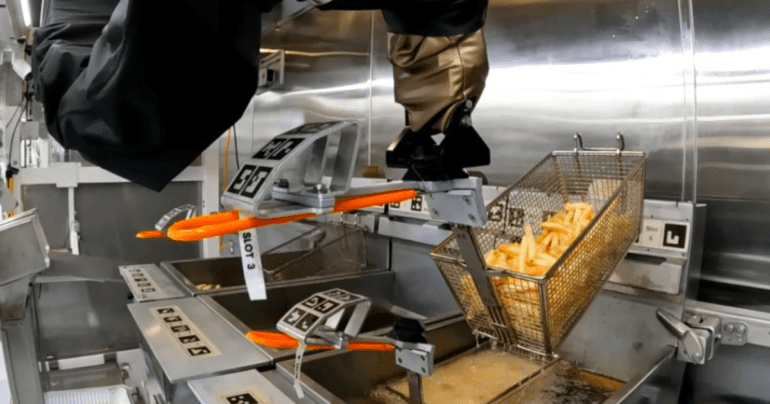TL;DR:
- CaliExpress, located in Pasadena, is set to become the world’s first fully-autonomous AI-powered restaurant.
- This innovative eatery utilizes advanced technology from Miso Robotics and PopID for seamless automation.
- Customers can order through self-service kiosks connected to PopID accounts, with real-time burger patty crafting and perfect fries from Flippy.
- CaliExpress offers a simple menu, emphasizing improved quality, consistency, and speed.
- It creates a safer kitchen environment, reducing accidents and waste while providing above-average wages for employees.
- The restaurant also doubles as a “pseudo-museum” showcasing the evolution of Flippy.
- Local schools are encouraged to visit, promoting AI and automation development.
Main AI News:
In the heart of Pasadena, California, a groundbreaking culinary experience is about to take shape as CaliExpress prepares to open its doors in the coming weeks. CaliExpress, a venture powered by the cutting-edge technology from Miso Robotics and PopID, is poised to become the world’s premier fully-autonomous and artificial intelligence-driven restaurant, redefining the way we dine.
Located at 561 E. Green Street near Madison Avenue, CaliExpress promises a dining experience like no other. According to John Miller, CEO of PopID and a board member of Miso Robotics, “To our knowledge, this is the world’s first operating restaurant where both ordering and every single cooking process are fully automated.” This remarkable achievement is the result of years of relentless research, development, and substantial investment in innovative companies.
At the heart of CaliExpress lies a state-of-the-art kitchen equipped with the most advanced systems in food technology, boasting fully automated grill and fry stations. Powered by cutting-edge AI and robotics, Miso Robotics leads the charge in culinary automation. The journey begins as customers enter the restaurant and place their orders through self-ordering kiosks, seamlessly linked to their PopID accounts.
One of the highlights of the dining experience is witnessing the grill robot craft high-quality beef into burger patties in real-time, ensuring a mouthwatering masterpiece with every order. Simultaneously, Flippy, the world’s first AI-powered robotic fry station, delivers piping hot fries made from top-grade potatoes, cooked to perfection every time.
CaliExpress keeps it simple with a menu that includes options such as hamburgers, cheeseburgers, and lettuce wraps, accompanied by a side of delectable fries and a refreshing drink. Rich Hull, CEO of Miso Robotics, emphasizes the transformative impact of AI-powered robotics on the food industry, stating, “AI-powered, robotic order-taking and cooking enables the major chains that feed America to substantially improve quality, consistency, and speed.”
Cali Group, the visionary holding company behind CaliExpress, recognizes the importance of safety for its employees. With Flippy in the kitchen, the restaurant achieves a significant safety breakthrough, reducing the risk of accidents and waste. “The CaliExpress by Flippy kitchen can be run by a much smaller crew, in a less stressful environment, than competing restaurants — while also providing above-average wages,” the group proudly affirms.
Beyond its culinary prowess, CaliExpress doubles as a captivating “pseudo-museum,” chronicling the journey of Flippy’s evolution. The exhibit includes a display of robotic arms from retired Flippy models, photographic exhibits, and 3-D printed artifacts from past development stages. Local schools are encouraged to reach out for tours, as Cali Group aims to inspire the future of AI and automation development.
Conclusion:
CaliExpress represents a groundbreaking leap in the restaurant industry, demonstrating the potential of AI-powered automation in delivering high-quality food and safety improvements. As the world’s first AI-powered restaurant, it sets a precedent for the future of dining, where technology and culinary excellence converge, ultimately reshaping the market by redefining customer expectations and operational efficiency.

